Perfume branding is about more than representing the company behind the fragrance—it’s about creating a personal connection with the consumer. Scent is deeply tied to identity, so much so that it’s common to associate a particular fragrance with someone you know. When choosing a perfume, people often look for one that matches their personality or style, making perfume branding as much about the consumer as it is about the product.
Good perfume branding should not only make the product attractive but also express who the consumer is while communicating the quality and nature of the fragrance itself. To help you create a perfume brand that achieves all of this, we’ve put together this guide to the ins and outs of developing a strong perfume brand identity.
- Perfume branding involves defining your perfume brand, building a distinct perfume brand identity and designing packaging that resonates with your audience.
- Defining your perfume brand begins with market research to understand your audience, explore competitors and craft a strong value proposition for your fragrance branding.
- A strong brand personality and voice help your perfume stand out, whether you’re focused on luxury, modernity or a playful image.
- A cohesive perfume brand identity is built with elements like logo design, typography, and color palettes, ensuring they align with your fragrance’s story.
- Packaging branding is crucial in perfume branding, featuring unique perfume names, distinctive bottle designs, and complementary labels and boxes.
- Successful perfume packaging combines aesthetics and tactile appeal, creating a sensory experience that reflects your perfume brand identity and its unique story.
The complete guide to perfume branding
Perfume branding is about creating a strong connection between your fragrance and your audience. This guide breaks the process of branding a perfume into three key steps: defining your perfume brand, developing a cohesive perfume brand identity and designing packaging that reflects your perfume’s story and appeals to your target market.
Define your perfume brand
Before you get started, it is important to review what a brand actually is. A common misconception is that a brand is interchangeable with visual elements such as a logo or packaging. While these are expressions of brand identity, a brand is more nebulous and emotional, and more about the persona you are trying to convey with your product. With this in mind, let’s get into some specific tips for developing your brand.
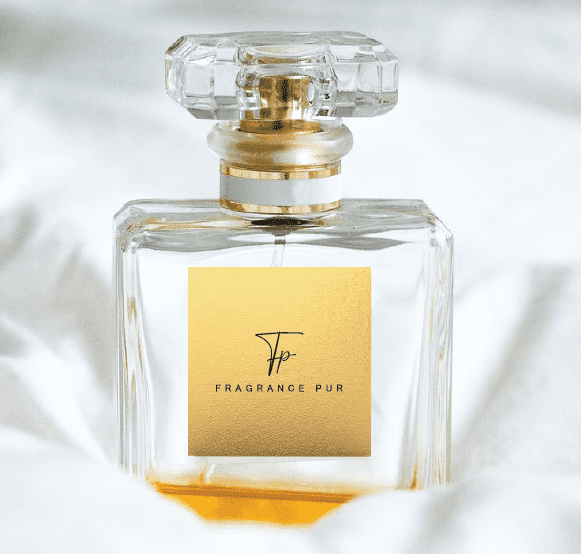
Source: Perfume branding by Musique! via 99designs by Vista.
Market research
Understanding how to create a perfume brand starts with researching the market it is meant to inhabit. First, consider your target audience. Decide on the demographics (age, location, income etc) that you want to reach. Once you have this raw data, it is also helpful to go a step further to create buyer personas. This translates the cold statistics into actual people.
As a factor in a person’s curated style—along with clothing and other beauty products—perfumes have the power to represent not only who a person is but who the person wants to be. To this end, many perfume brands cater to an elegant or luxurious lifestyle, even if their consumer base is not necessarily wealthy. Be wary of this approach—creating unrealistic expectations can easily become irresponsible, and the appearance of pretension has a way of putting people off. Similarly, you want to consider what your audience values. Many brands, for example, highlight sustainable materials or ethical labor practices for this reason.
A major factor in understanding the market is getting to know your competitors. Identify who these competitors are, in terms of similar price range, target audience and fragrance. Keep an eye on how they promote and brand themselves—you will revisit this and compare yourself against them throughout the branding process.
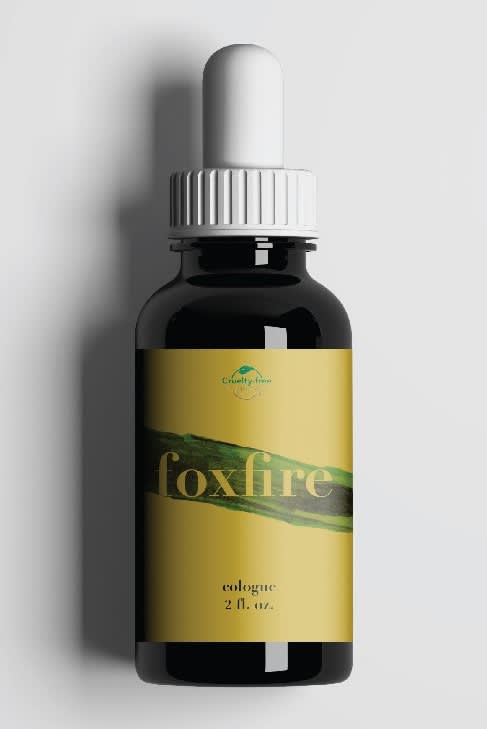
Source: Perfume branding by antoniodudas via 99designs by Vista.
Value proposition
Once you have a better idea of who you are trying to fit in with (your target audience) and who you are trying to set yourself apart from (your competitors), your next step is to develop a value proposition.
This is a statement that describes why someone would want to buy your perfume, what exactly you are offering that they cannot get elsewhere, and how you are improving their lives. It is commonly depicted in the formula Value = Benefits – Cost. Being able to articulate this in a clear, specific way gets you on the road to imagining what makes your perfume product one of a kind, and this is essential for the branding of perfume.
Brand personality and voice
With an idea of who you are marketing your product to and how you are different, you can start to put your brands into words—literally. Like any personality type, brands have a voice, a particular way of speaking, that sets them apart. This can be casual or refined, serious or alluring, or anywhere in between. You can see how adjectives like these already get you thinking about a particular type of person to go with the voice.
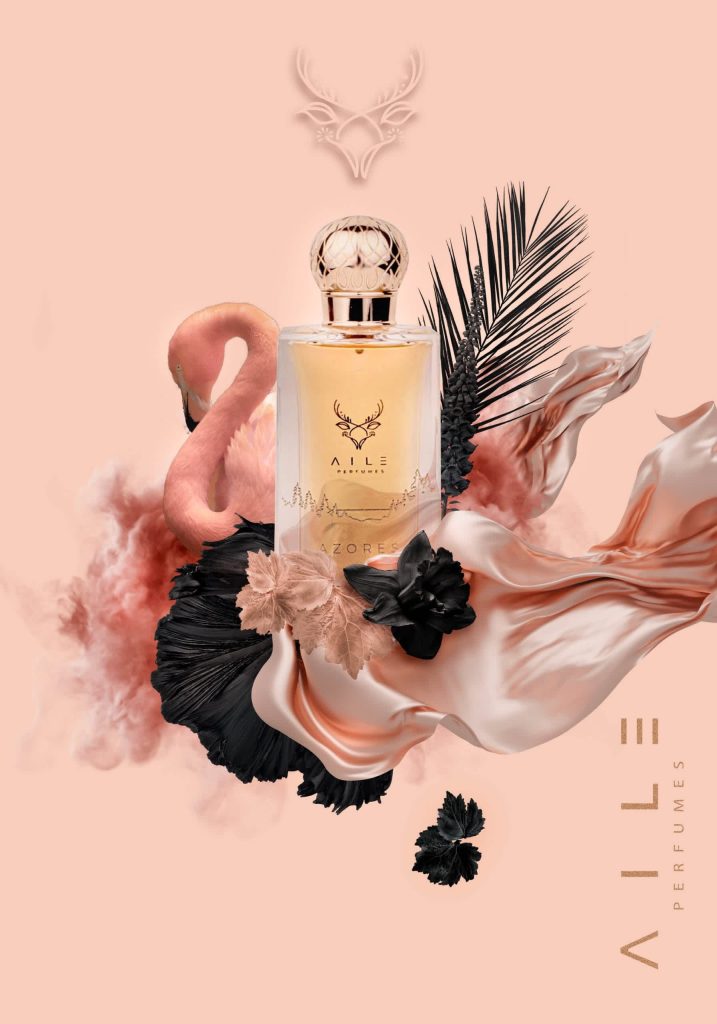
Source: Perfume branding by L’Atelier via 99designs by Vista.
Develop your perfume brand identity
Let’s move on to the branding process—this is the action you take to convey your brand to an audience. Here, we’ll focus on establishing a visual identity, as this is the most common way that a first-time, potential customer will interact with your perfume brand.
Visual branding
Your ultimate goal should be the creation of a brand style guide, which is a booklet that consolidates all the instructions for how your brand will be represented visually. Check out the best brand guidelines for inspiration. This acts as a reference for brand consistency across the organization. While the specific contents of a visual brand guide can vary, we’ll go over some of the most basic brand identity elements to pay attention to.
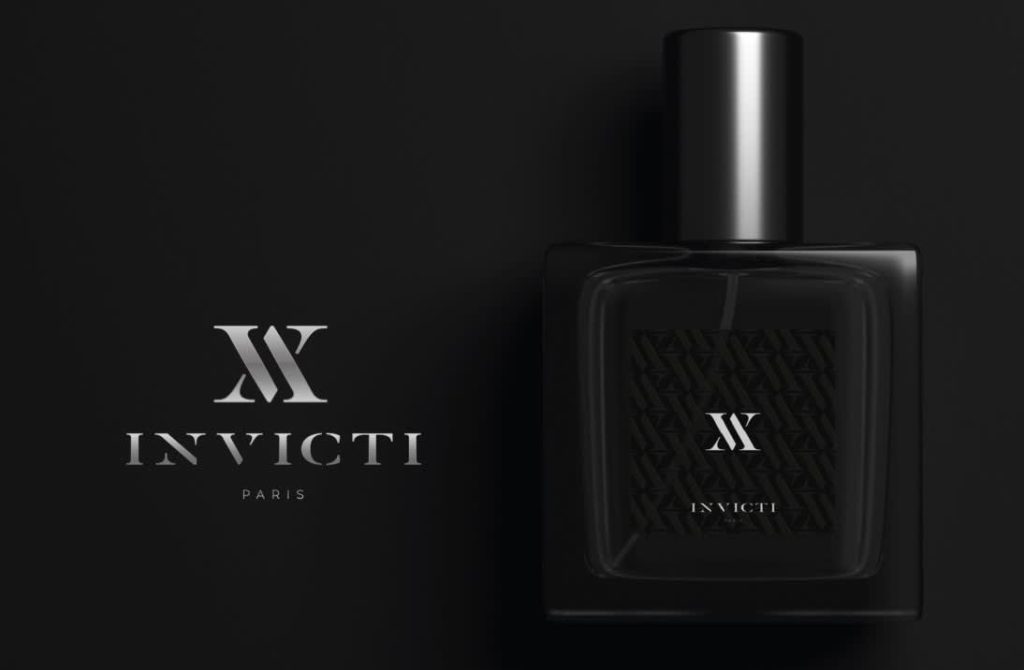
Source: Perfume branding by GinSonic via 99designs by Vista.
Logo design
A logo design is the mark meant to identify your perfume brand, often acting as stand-in for the brand name itself. Generally, your logo should aim to encapsulate the essence of your brand while remaining simple and memorable. To this end, make sure that you research perfume logos to avoid common imagery or styles, such as a generic perfume bottle with text. Use what you know about your brand and your competitors to choose imagery that evokes something unique and specific about it.
If you are marketing a number of different perfume products, it is not uncommon to create a logo for the parent brand and separate logos for each fragrance. In this case, you will want to ensure that the supplemental logos remain derivative of the parent logo while appealing to their individual target audiences. This keeps your fragrance branding consistent even though each might have varying market strategies.
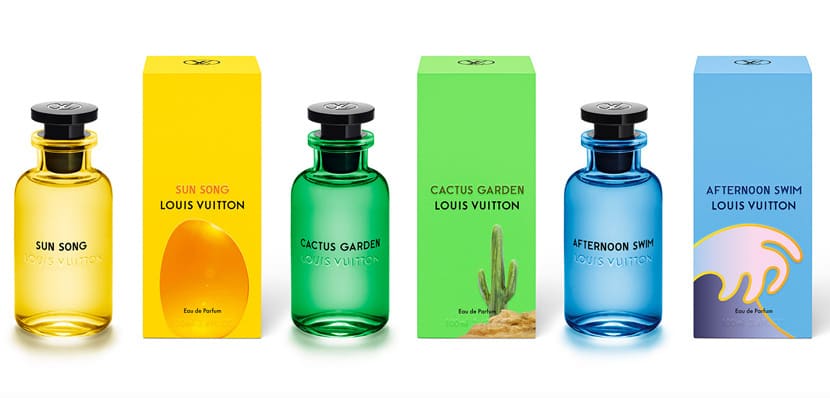
Source: Louis Vuitton Les Colognes, their first unisex fragrance line, features subtlely different branding choices for each scent while maintaining a consistent theme. Image via Louis Vuitton
Typography
Typography describes all of the letter styles and fonts that you will use in branding materials. It often includes the logo font, tagline font, heading font, subheading font and body copy font. Your logo font (and tagline if applicable) will form the basis for the rest of your font choices—which is to say that your other fonts should harmonize with or contrast your logo font in some meaningful way.
Assuming your logo lettering is custom, you can still find related, similar typefaces through a service like WhatTheFont. The headline font is meant to be large and attention grabbing, often used on titular text for product descriptions or articles. Body copy font, used for paragraph text, should prioritize readability. In general, many perfume brands go for an elegant aesthetic, and to this end classic serifs, script lettering, and gold/silver effects are common.
Color palette
Color is a primary means of appealing to emotion. Think of the way that the color of the room can drastically affect the mood, from somber to joyful. Your brand’s color palette should strategically evoke the emotions your perfume is going for. Most brands keep their palette simple, often choosing a complementary pair, a bold accent and a neutral background tone.
There are some other considerations specific to perfume branding. For example, the actual perfume liquid might be tinted and you will need to choose colors that can work with it. And similar to colors, scents can be emotional, evoking pictures and memories, and you can leverage these for your palette. For example, if a fragrance reminds you of a mountain trail, you might want to go with more earthy tones. If it reminds you of a summer sea breeze, nautical colors might be more appropriate.
Imagery
Imagery describes the style of photography or video footage used in promotional materials. This can include aesthetic dos and don’ts around filters, lighting, fashion and scenery. Many perfume brands go for aspirational photos, such as highly produced advertising and imagery that shows idealized models. Conversely, more candid photos of real people that your consumers find more relatable can be similarly appealing.
More than any other visual branding choice, imagery is intimately tied to your audience. Consider what feelings you are trying to evoke, be it inspirational or realistic. Filters or certain styles of image coloring, such as formal black-and-white, can support these emotions and create a consistent aesthetic.
Perfume packaging branding
In addition to traditional visual identity elements, perfume products involve physical packaging. As these are an integral part of the customer’s interaction with the product, they are a crucial space for branding. The key here is interaction: compared to the visual branding elements discussed earlier, the customer can actually touch packaging elements, and feel the weight and texture with their hands. When it comes down to it, designing for packaging branding means designing an experience.
Perfume bottle design
Right alongside the logo, the bottle has the potential to be one of the most identifiable features of a perfume product. Often, people can recognize notable brands by the bottle shape alone.
For instance, Chanel No. 5 has come to exemplify the classic square lid and bottle shape, even if it appears relatively simple these days. Byredo, meanwhile, offers a more modern rounded bottle and lid. On the extreme end of the spectrum, Moschino creates increasingly avant garde perfume bottles, from its honey bear Toy Boy to its windex-inspired Fresh Couture. Along these same lines, a perfume brand designer’s first order of business is to design a distinctive silhouette.
In the past, many perfume bottles were designed in elaborate, multifaceted configurations to make them reminiscent of diamonds to justify their high price. This approach is still useful for high end perfume brands. Alternatively, simplified bottle designs can support a more minimalist and practical approach, as not every buyer is going to want to lug around an exquisite bottle sculpture.
The cap is another factor in bottle design—with heavy vial stoppers creating an old world, mystic potion aesthetic; squeezable atomizers giving off a feminine, classic Hollywood vibe; and eye-dropper caps being more medicinal and new agey. Some brand designers go the extra mile to focus their artistic attention exclusively on the cap, such as in Marc Jacobs Daisy and Dolce & Gabbana Fruit Collection. This achieves a distinctive look even if the bottle itself is plain by comparison.
Perfumes are often sold in varying sizes as well, so you will want to consider whether your bottle design can scale up or down easily. This may mean choosing a consistently minimalist aesthetic, as in Le Labo’s THÉ NOIR 29, or coming up with ways to minimize a more complex bottle as it gets downsized. Throughout this process, you will want to consult with a bottle manufacturer to make sure your designs are practical.
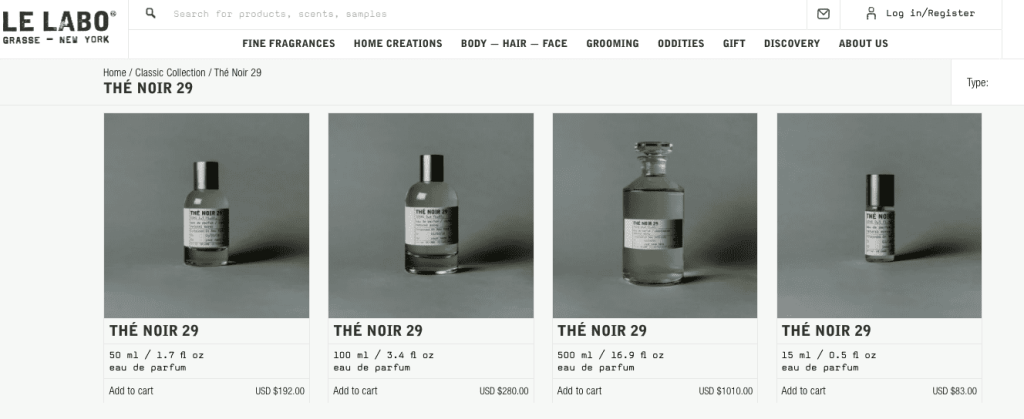
Source: Le Labo THÉ NOIR 29 at varying sizes via Le Labo
The important thing to keep in mind is that the bottle itself is sending a message, whether that is about the perfume being masculine or feminine, high-end or unashamedly weird, and you should make sure that you shape that message along with the actual bottle.
Label design
The role of the label on the front of the bottle is to mark the specific fragrance variant and showcase the overall brand logo. In cases where the bottle itself does much of the heavy lifting in creating a distinctive look, many perfume designs opt for a minimalist label, accompanying the logo with decorative embellishments such as filagrees and ornamental frames. Alternatively, a distinctive, artistic label design can make up for a plain bottle shape, such as in Imaginary Authors’ dynamic label art.
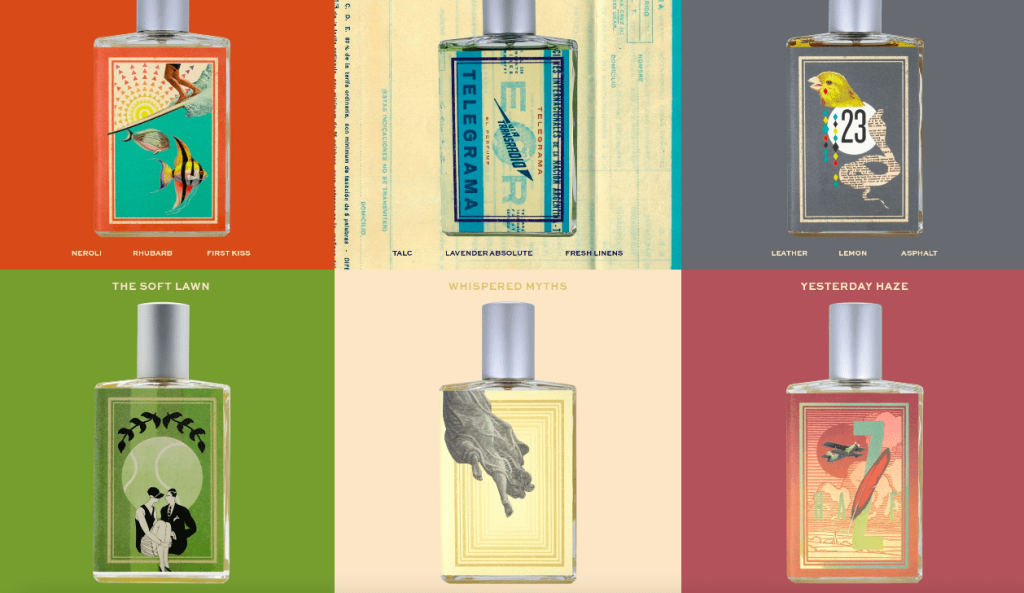
Source: via Imaginary Authors
In addition, the label should be designed with the bottle shape in mind, sometimes even mimicking the specific arches of the bottle. For example, a rectangular label works well with a wider, boxier perfume bottle. A rounded label can work well with an arched bottle shape. Alternatively, if you want the label to draw more attention to itself, you can make the shape contrast the bottle shape.
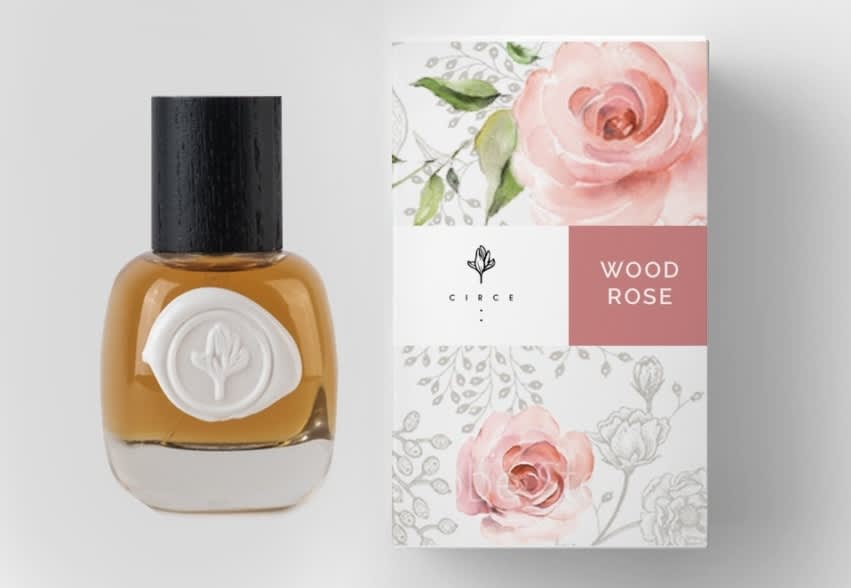
Source: This round label design by crldesigns uses a creative, wax seal style via 99designs by Vista.
Some perfumes might include a backside label—which would contain a scent or product description, ingredients and legal information. As most customers would need this information before they purchase, many relegate it to the back of the box. With that said, the purpose here is to convey practical information, so it should focus on readability over decorative flair while still matching the general aesthetic of the frontside label.
Box design
Although the box might be visible in the store, it is more common for sample bottles to be displayed to the customer. The box then becomes more of an after-purchase branding element. But just because the customer has already paid does not mean you should miss out on a crucial branding opportunity. The opening of a package is a delightful experience for the customer, similar to opening a Christmas present even if they purchased it for themselves, and it is worthwhile to make sure they associate this experience with your brand.
Similar to the product label, the outer box design is usually a showcase for the logo and brand colors. It is also important to consider the tactile experience—glossier material creates a sleek, modern feeling whereas softer material can feel more textured and natural. Inside of the box, packaging paper can be branded as well with logo patterns or colors. The packaging design is also a chance to use (and highlight) recycled products if sustainability is important to your brand.
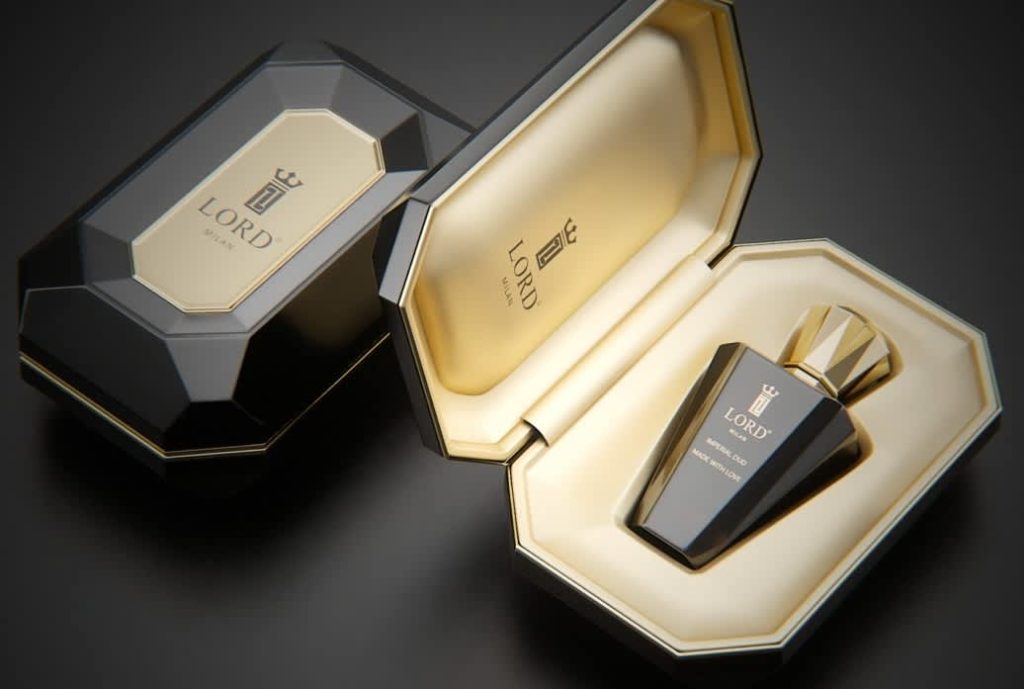
Source: Perfume branding by YuriyBaranov via 99designs by Vista.
As mentioned earlier, the design of packaging is about creating an experience. Consider every step that the customer goes through, from holding the box, to opening it, to unwrapping their packaging, and imagine what you want them to feel throughout.
Get perfume branding that your customers will love
Perfume branding is much more than a good marketing strategy—it is about getting personal with the buyer. Like an appealing fragrance, good perfume branding won’t feel out of place outside of the store and inside of a consumer’s everyday world. It will reflect their personality, values and aspirations.
This guide to perfume branding will give you a good place to start when considering the many ways you can connect your fragrance brand to your buyers’ lives. With that said, a truly outstanding perfume brand depends on connecting with a talented designer.
Author: Johnny Levanier
FAQ about perfume branding
How to brand a perfume?
Perfume branding is all about connecting your fragrance to your audience. Start by defining your brand — know your audience, analyze competitors and craft a value proposition. Build a cohesive brand identity with elements like logos, colors and packaging, and use storytelling to make your fragrance unforgettable.
How much does it cost to make a perfume brand?
Creating a perfume brand can cost $10,000 to $50,000, covering production, packaging and marketing. Luxury or custom fragrances cost more, but you can save by hiring freelance professional designers for logo design, packaging and branding while still creating unique perfume names and a strong brand identity.
How do I advertise my perfume brand?
Tell your brand’s story through print and digital marketing, ads and social media to highlight your fragrance’s unique qualities. Use beautifully designed flyers, postcards and posters to leave a lasting impression. Combine these with influencer partnerships, targeted online ads and free samples for a well-rounded campaign. Strong visuals, consistent branding and unique perfume names will ensure your efforts grab attention.
How do you come up with a perfume brand name?
Think about names that reflect your fragrance’s vibe—elegant, bold or playful. Unique perfume names should be memorable, easy to say and resonate with your audience. Avoid clichés, research competitors and aim for something that tells your story.
How can I create a unique brand identity for my perfume?
Focus on what makes your perfume special. Build your identity with a standout logo, thoughtful color palette and eye-catching packaging. Consistency is key—tie it all together with a clear voice and a story that sticks with your audience.
What are the essential steps in launching a perfume brand?
Define your brand, develop your fragrance and create a strong visual identity. Research your audience, pick unique perfume names and design standout packaging. Use storytelling and strategic marketing to launch your brand with impact.
What are some common mistakes to avoid in perfume branding?
Don’t skip audience research or settle for generic branding. Avoid overcomplicated designs or clichéd names. Consistency matters—make sure your logo, packaging and messaging align to create a cohesive perfume brand identity.
How can small businesses compete with established perfume brands?
Leverage your authenticity and niche appeal. Tell a compelling story, use unique perfume names and target specific audiences. Invest in personalized experiences, bold packaging and digital marketing to stand out.
